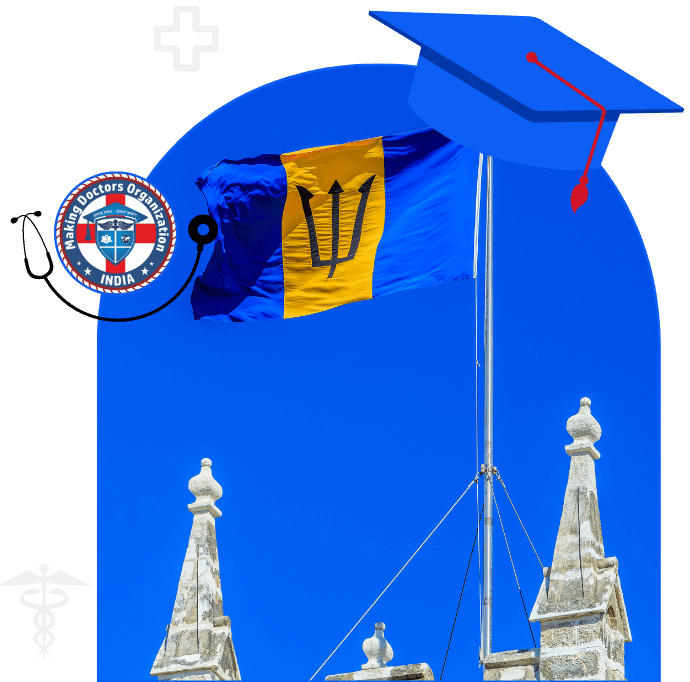-A complete guide to achieving your dreams. Columbus Central University Address: GMQX+3MM, Ladyville, Belize. The cost of MBBS 43500 USD (Total tuition
-
India's most trustable & student's first choice
-
Get directionGet direction

MBBS in India & Abroad

MBBS in India & Abroad

-A complete guide to achieving your dreams. Columbus Central University Address: GMQX+3MM, Ladyville, Belize. The cost of MBBS 43500 USD (Total tuition
-A complete guide to achieving your dreams. Washington University of Health & Science Address: Jade Street, San Pedro, Belize. The cost of

Achieving a globally recognized MBBS degree can help you fulfill your dreams.

Expand their world view and travel experience.

Enhance their career opportunities.

Strengthen communication and team-building skills.

Experience and learn another culture first-end.

Make new friends around the world.

Learn another language and dialect.

Discover new things about their own culture.

Boost students' confidence and community leadership.
Overview
Process
Research: Research different universities in Central America and their admission requirements, including application deadlines, academic requirements, and language proficiency.
Application: Submit the online or paper application form along with required documents such as transcripts, proof of language proficiency, and other relevant certificates.
Admission test: Some universities may require admission tests such as the MCAT, SAT, or BMAT. Be sure to check the admission requirements of the university.
Interview: Some universities may require a personal interview as part of the admission process.
Acceptance letter: If the university finds the application to be satisfactory, the student will receive an acceptance letter.
Visa application: International students will need to apply for a student visa to study in Central America. Check the visa requirements and apply accordingly.
Enrollment: Once the visa is approved, enroll in the university by paying the required fees.
It is important to note that specific admission requirements and procedures may vary among universities and countries in Central America. Therefore, it is recommended that students visit the university’s website or contact the admissions office for detailed information regarding the admission process.
Advantages
Documents
Statement of Purpose (SOP): A written statement explaining the reason for applying to the university and the course of study.
High school transcripts: Official transcripts or mark sheets from the last completed grade or year of high school education.
Degree certificate: If you have completed a bachelor’s degree, you will need to submit the official degree certificate.
Passport: A valid passport with at least six months validity from the date of arrival in the country.
Visa: A student visa is required for international students to study in Central America.
English proficiency test score: Many universities require a score from an English proficiency test such as TOEFL or IELTS.
MBBS in Central America
There are several reasons why studying MBBS in Central America can be beneficial for international students. Some of the reasons are:
Affordable tuition fees: Compared to other countries offering medical education, the tuition fees in Central America are relatively low.
English as the medium of instruction: English is the primary language of instruction in most universities, making it easily accessible for international students.
Accredited medical programs: The medical programs offered in Central America are internationally recognized and accredited by organizations such as WHO, MCI, and ECFMG.
Clinical rotations in the US: Some universities offer clinical rotations in the United States, providing students with practical exposure to the US healthcare system.
Experienced faculty members: The faculties in Central American universities are experienced, qualified, and equipped with modern facilities and technology.
Shorter program duration: The MBBS program in Central America is usually of shorter duration compared to other countries, allowing students to enter the workforce earlier.
Scholarships and financial aid: Several universities offer scholarships and financial aid to international students.
Opportunity to work in Central America or the US: After graduation, students can work in Central America or the US with their recognized degree.
Overall, studying MBBS in Central America offers an excellent opportunity for students to obtain quality medical education at an affordable cost, with international recognition and excellent prospects for career advancement.
Research: Research different universities in Central America and their admission requirements, including application deadlines, academic requirements, and language proficiency.
Application: Submit the online or paper application form along with required documents such as transcripts, proof of language proficiency, and other relevant certificates.
Admission test: Some universities may require admission tests such as the MCAT, SAT, or BMAT. Be sure to check the admission requirements of the university.
Interview: Some universities may require a personal interview as part of the admission process.
Acceptance letter: If the university finds the application to be satisfactory, the student will receive an acceptance letter.
Visa application: International students will need to apply for a student visa to study in Central America. Check the visa requirements and apply accordingly.
Enrollment: Once the visa is approved, enroll in the university by paying the required fees.
It is important to note that specific admission requirements and procedures may vary among universities and countries in Central America. Therefore, it is recommended that students visit the university’s website or contact the admissions office for detailed information regarding the admission process.
Statement of Purpose (SOP): A written statement explaining the reason for applying to the university and the course of study.
High school transcripts: Official transcripts or mark sheets from the last completed grade or year of high school education.
Degree certificate: If you have completed a bachelor’s degree, you will need to submit the official degree certificate.
Passport: A valid passport with at least six months validity from the date of arrival in the country.
Visa: A student visa is required for international students to study in Central America.
English proficiency test score: Many universities require a score from an English proficiency test such as TOEFL or IELTS.
There are several reasons why studying MBBS in Central America can be beneficial for international students. Some of the reasons are:
Affordable tuition fees: Compared to other countries offering medical education, the tuition fees in Central America are relatively low.
English as the medium of instruction: English is the primary language of instruction in most universities, making it easily accessible for international students.
Accredited medical programs: The medical programs offered in Central America are internationally recognized and accredited by organizations such as WHO, MCI, and ECFMG.
Clinical rotations in the US: Some universities offer clinical rotations in the United States, providing students with practical exposure to the US healthcare system.
Experienced faculty members: The faculties in Central American universities are experienced, qualified, and equipped with modern facilities and technology.
Shorter program duration: The MBBS program in Central America is usually of shorter duration compared to other countries, allowing students to enter the workforce earlier.
Scholarships and financial aid: Several universities offer scholarships and financial aid to international students.
Opportunity to work in Central America or the US: After graduation, students can work in Central America or the US with their recognized degree.
Overall, studying MBBS in Central America offers an excellent opportunity for students to obtain quality medical education at an affordable cost, with international recognition and excellent prospects for career advancement.
Achieving a globally recognized MBBS degree can help you fulfill your dreams.